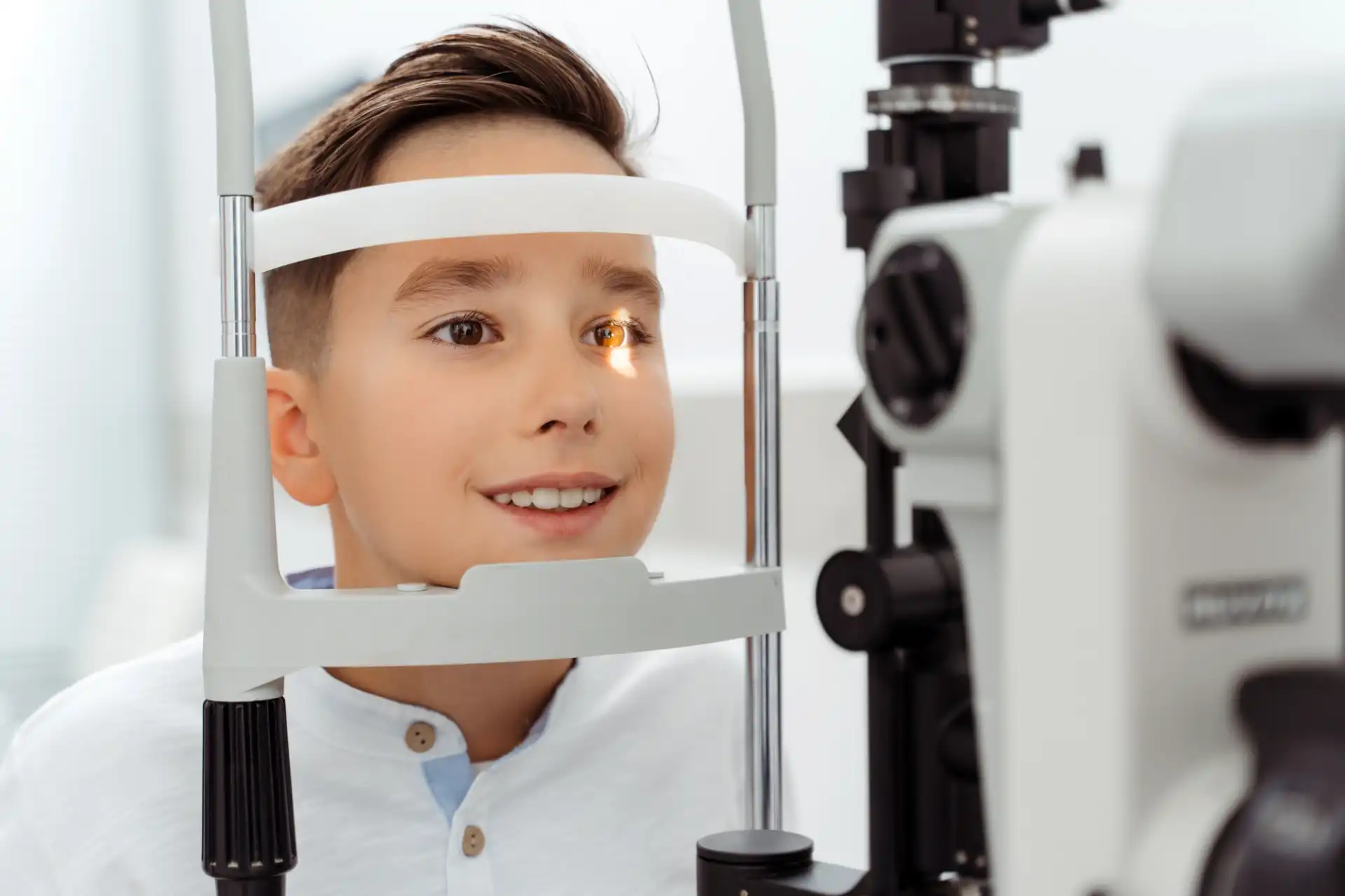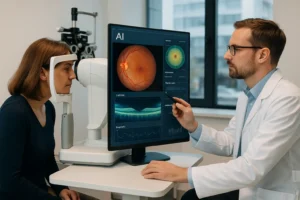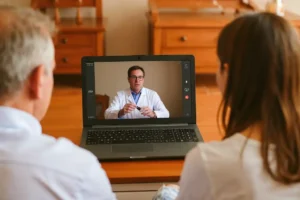Why Early Eye Care Matters
Healthy vision is crucial for your child’s overall development, learning, and quality of life. Children rely on their vision for nearly every activity, from reading and writing to playing and exploring their world. Regular eye exams help detect and address potential vision problems early, ensuring your child sees clearly and thrives.
This blog explains the importance of eye exams for children, what to expect during an exam, and how to protect your child’s vision as they grow.
Why Are Eye Exams Important for Children?
Eye exams are essential for detecting vision issues that could interfere with your child’s learning and development. Many vision problems, like nearsightedness or farsightedness, can go unnoticed because children often don’t realize they have difficulty seeing.
Regular eye exams can:
- Detect vision issues early, before they affect school performance.
- Identify underlying eye health problems, such as lazy eye (amblyopia) or crossed eyes (strabismus).
- Ensure proper development of your child’s visual system.
When Should My Child Have Their First Eye Exam?
The American Optometric Association (AOA) recommends the following schedule for pediatric eye exams:
- First Exam: At 6 months of age
- Second Exam: At 3 years old
- Third Exam: Before starting school (around age 5-6)
- Annual Exams: Once a year thereafter, or as recommended by your optometrist
These exams help monitor your child’s visual development and catch any issues early.
Signs Your Child May Have Vision Problems
While some vision issues can only be detected during an eye exam, here are common signs parents should watch for:
- Squinting or tilting the head to see better
- Sitting too close to the TV or holding books too close
- Rubbing their eyes frequently
- Complaints of headaches or tired eyes
- Difficulty concentrating in school
- Poor hand-eye coordination
- Closing one eye or covering it to focus
If you notice any of these behaviors, schedule an eye exam promptly.
What Happens During a Child’s Eye Exam?
A pediatric eye exam is designed to be comfortable and engaging for children. Here’s what you can expect:
1. Case History
The optometrist will ask about your child’s medical and vision history, including any concerns you’ve noticed.
2. Visual Acuity Testing
The doctor will assess how well your child can see at various distances using age-appropriate tools, such as picture charts or letter charts.
3. Eye Alignment and Focus
Tests like the cover-uncover test evaluate how well your child’s eyes work together and track objects.
4. Refraction Testing
This determines if your child needs glasses by identifying any nearsightedness, farsightedness, or astigmatism.
5. Eye Health Evaluation
The optometrist will check the health of your child’s eyes, looking for conditions like amblyopia, strabismus, or other abnormalities.
Common Vision Problems in Children
- Nearsightedness (Myopia): Difficulty seeing distant objects clearly.
- Farsightedness (Hyperopia): Difficulty focusing on nearby objects.
- Astigmatism: Blurred or distorted vision caused by an irregularly shaped cornea.
- Amblyopia (Lazy Eye): Poor vision in one eye due to improper development.
- Strabismus (Crossed Eyes): Misalignment of the eyes that can affect depth perception.
These conditions are treatable, especially when caught early.
How to Protect Your Child’s Vision
- Encourage Outdoor Play
Spending time outdoors can reduce the risk of developing myopia. - Limit Screen Time
Follow age-appropriate screen time guidelines and ensure your child takes breaks to avoid digital eye strain. - Provide a Balanced Diet
Include foods rich in vitamin A, omega-3 fatty acids, and lutein to support eye health. - Ensure Proper Lighting
Make sure your child reads and does homework in well-lit environments. - Wear Protective Eyewear
Protect your child’s eyes during sports or outdoor activities with proper eyewear.
FAQs About Eye Exams for Children
Q: Are school vision screenings enough?
A: No, school screenings can detect some vision issues but are not comprehensive. A full eye exam by an optometrist is necessary for a complete evaluation.
Q: Can a child wear glasses or contact lenses?
A: Yes, glasses are common for children, and older children may also be candidates for contact lenses with guidance from an optometrist.
Q: What if my child refuses to wear glasses?
A: Let your child choose their frames, and explain how glasses can improve their vision and comfort in daily activities.
Conclusion: Start Your Child’s Vision Journey Early
Regular eye exams are a vital part of your child’s overall health and well-being. By catching and treating vision problems early, you can help your child succeed in school, sports, and daily life.
At Bridgemill Eyecare, we specialize in pediatric eye exams tailored to meet the unique needs of young patients. Schedule your child’s eye exam today and give them the gift of clear, healthy vision for years to come.





